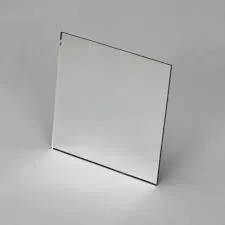

Understanding Low-E Glass The Smart Choice for Modern Architecture
In today’s architectural landscape, energy efficiency and sustainability are paramount. One remarkable innovation that has gained traction in recent years is Low-E glass, or low-emissivity glass. This specialized glass is engineered to minimize heat transfer, thereby enhancing the energy efficiency of buildings while maintaining comfort and aesthetic appeal. This article delves into the significance of low-E glass, its properties, advantages, and applications.
What is Low-E Glass?
Low-E glass is coated with a thin layer of metallic oxides that reflect thermal radiation while allowing visible light to pass through. This coating is typically translucent and is applied to one or more surfaces of the glass during manufacturing. The design of Low-E glass can either be “hard coat” or “soft coat,” each offering different performance characteristics.
The primary function of Low-E glass is to reduce the amount of infrared and ultraviolet radiation that can penetrate through the glass, contributing to heat retention in colder climates and heat reflection in warmer regions. By doing so, it plays a crucial role in regulating indoor temperatures, ultimately leading to energy savings and greater comfort.
Advantages of Low-E Glass
1. Energy Efficiency One of the main benefits of Low-E glass is its ability to significantly reduce energy costs. By minimizing heat loss in the winter and blocking excessive heat in the summer, buildings equipped with Low-E glass can maintain a more stable indoor temperature, reducing the reliance on heating and cooling systems.

2. Enhanced Comfort With improved insulation properties, Low-E glass helps in creating a more comfortable living and working environment. It reduces drafts and temperature fluctuations near windows, leading to consistent indoor comfort.
3. UV Protection Low-E coatings effectively block harmful ultraviolet rays, safeguarding interior furnishings, artwork, and flooring from fading and deterioration. This makes Low-E glass an ideal choice for both residential and commercial buildings where natural light is abundant.
4. Reduced Condensation The thermal performance of Low-E glass also helps to minimize condensation on interior surfaces. By maintaining the glass temperature above the dew point, it reduces the formation of moisture, which can lead to mold and other related issues.
Applications of Low-E Glass
Low-E glass is versatile and can be utilized in various applications, including residential windows, commercial storefronts, glass facades, and skylights. Its availability in double and triple-pane configurations further enhances its insulation capabilities. As energy codes and building regulations become more stringent, the adoption of Low-E glass is increasingly becoming a standard practice in new constructions and renovations.
Conclusion
Incorporating Low-E glass into architectural designs is not just about aesthetics; it is a strategic move towards sustainability and energy efficiency. With its ability to reduce energy consumption, enhance comfort, and provide UV protection, Low-E glass stands as an exemplary material for the modern era. As society continues to push towards greener building practices, Low-E glass is set to play an integral role in shaping the future of architecture and construction. Embracing this technology not only benefits individual buildings but also contributes to the overall well-being of the environment, making it a holistic choice for builders, architects, and homeowners alike.